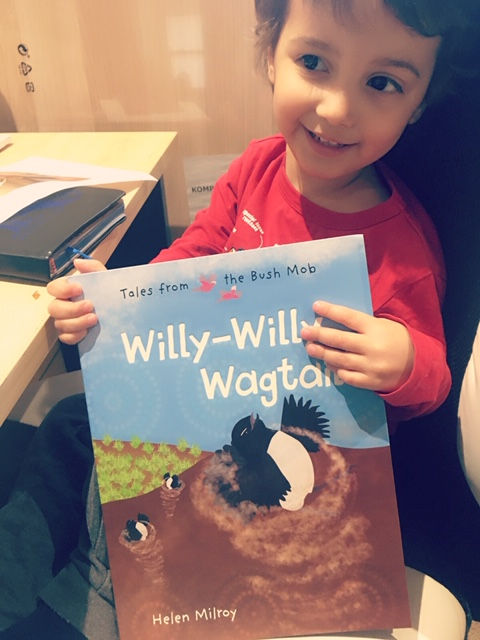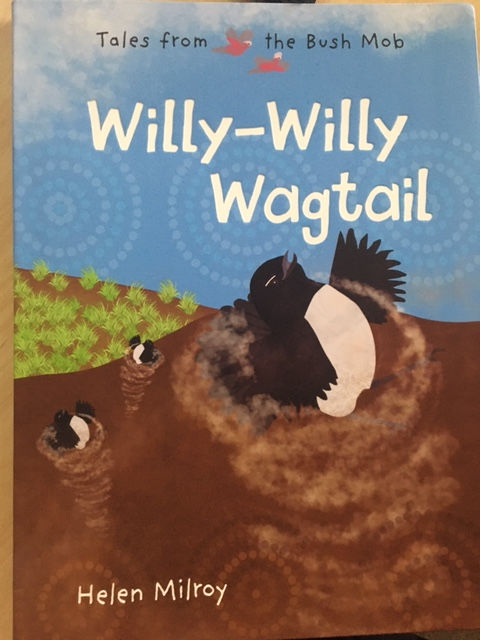This beautifully illustrated book, comprised of three linked short stories, is multi-layered. On one level it can be read as a story about the way in which the curious and friendly Willy Wagtail, through learning the different languages of the animals living in surrounding bushland, encourages the ‘bush mob’ to work together to save the community when devastating bushfires hit. On another level, this story illuminates the importance of learning about and preserving First Nations language and culture (and indeed, reminds all of us of the importance of learning more about the diverse range of cultures within our own communities).

Willy Wagtail sees that everyone has an important story to tell – even grumpy old Crow. Willy Wagtail befriends old Crow, learning his language and listening to his stories.We observe the symbiotic nature of the relationship between old Crow and Willy Wagtail. Willy Wagtail helps Crow grow strong and listens to his stories; in return Crow helps Willy Wagtail when he finds himself in danger. Powerful themes emerge from the tales in this book, such as working together to find solutions, being kind to each other, and drawing strength from the sharing of knowledge (from one generation to another). The stories work together to highlight the importance of community. It is only through undertaking to understand each other that we can all move forward together in unity.
The narrative of these stories have an ebbing flow and rhythm. As we read, we can imagine that these are stories that have been passed down from one generation to another.
The use of bright glossy colours in the illustrations will be sure to enchant readers of all ages. We lose ourselves in the earthy greens and browns of the landscape, the vivid blue of the skies, and the swirling streaks of yellow, orange and red when the bushfires hit.
The wind, earth and fire are personalised and given character – encouraging us to be aware of listening to nature, living in harmony with it, and protecting our resources.
This book would be appropriate for lower through to upper primary school age. My three-year-old loved the bright colourful illustrations and pointing out familiar Australian animals. Older readers may take away different meaning from the stories, which could be used as a platform to discuss the role of elders in First Nations people's culture, and the importance of preserving First Nations language.

Willy-Willy Wagtail is published by Magabala Books. Helen Milroy is a descendant of the Palyku people of the Pilbara region of Western Australia.
Bình luận